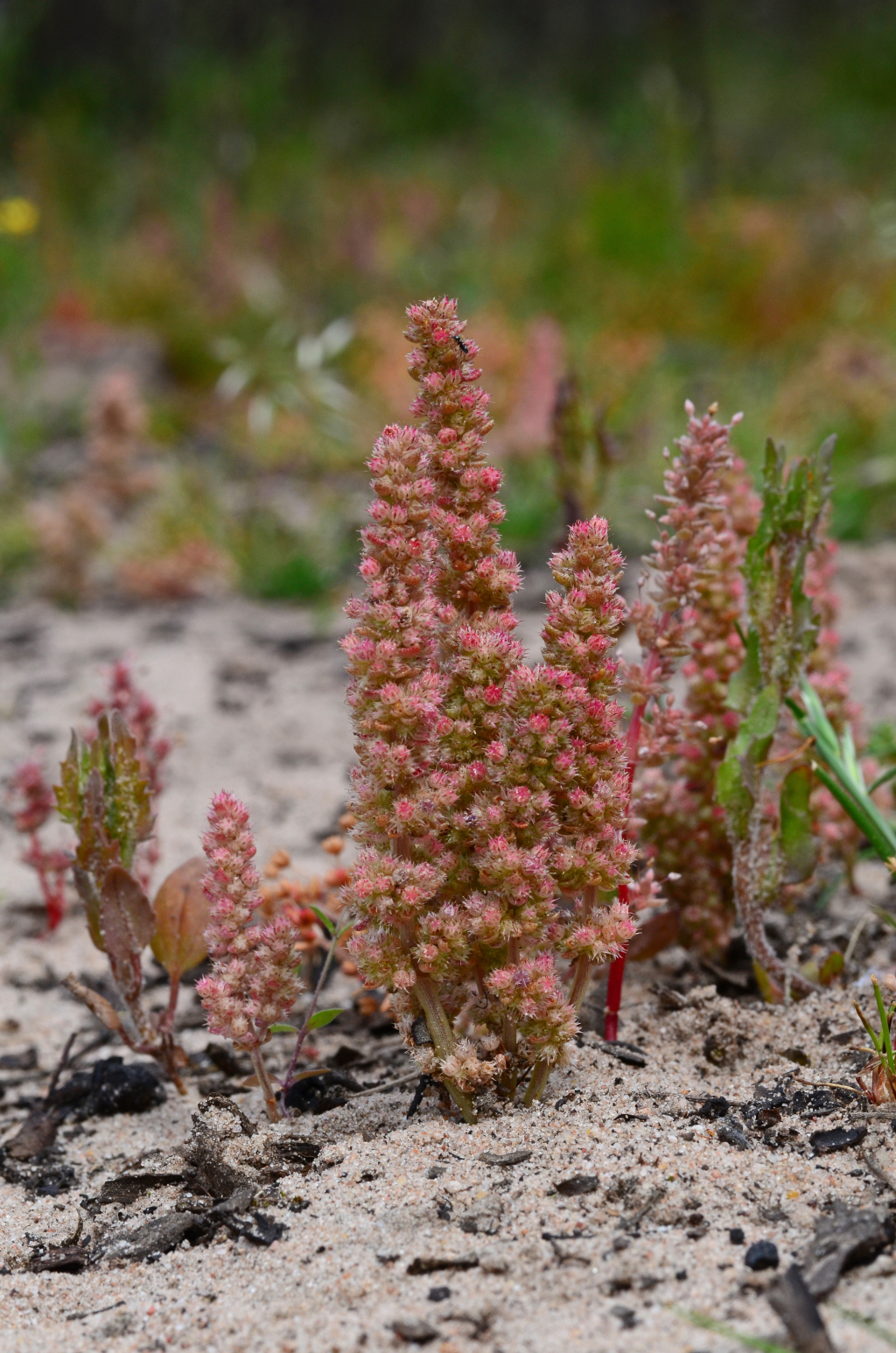Crassula colorata
(Nees) Ostenf. Dense CrassulaAnnuals with usually erect stems to 15 cm, little-branched (mainly from the second to fifth nodes) or unbranched. Leaves lanceolate, 2–6 mm long, 0.8–4.4 mm wide, obtuse, rarely acute, flat above, distinctly convex below. Inflorescence 1–several spike-like thyrses, with usually sessile cymules in axils of leafy bracts. Flowers 5-merous; calyx-lobes triangular, 1.2–2.2 mm long, acuminate to obtuse; corolla cream to red, lobes lanceolate, ovate, 1–2.1 mm long, acuminate, rarely acute; nectary scales linear, 0.5–0.7 mm long, 0.15–0.2 mm wide, rounded; carpels almost cylindric, with 2 ovules. Follicles erect, smooth to tuberculate, releasing seeds by basal circumscissal split; seeds 0.3–0.5 mm long, usually faintly longitudinally ridged.
LoM, MuM, Wim, VVP, VRiv, MSB, RobP, MuF, GipP, OtP, Gold, CVU, GGr, NIS, EGU, HSF.
2 varieties, only distinguishable on the basis of mature (or almost mature) fruit.
Toelken, H.R.; Jeanes, J.A.; Stajsic, V. (1996). Crassulaceae. In: Walsh, N.G.; Entwisle, T.J., Flora of Victoria Vol. 3, Dicotyledons Winteraceae to Myrtaceae, pp. 542–555. Inkata Press, Melbourne.
 Spinning
Spinning



